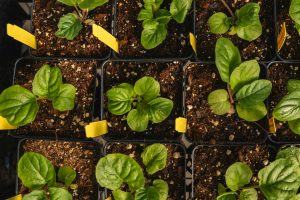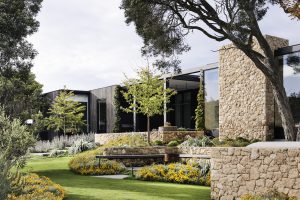It’s not often we have the opportunity to construct something as established as our Kew project. We have worked alongside these clients on multiple occasions, undertaking remedial works over the past six years. This time around, our brief was to repave the majority of the front and rear garden with new Victorian bluestone, but what we accomplished was so much more than that.
The bones of this garden were already well ingrained when we first arrived. The rear garden is a beautifully utilised space, with the pool in a great location and the planting thoughtfully chosen and carefully maintained.
Originally a Spanish Missionary style home, the interior of the house is sprawled with gothic timber features and stunning picture rails. Though a renovation is likely to have been completed by the previous owners in the 1970’s or 80’s, the space was never overly modernised. Instead, they have respectfully restored and maintained what was already there.
As Ian and our clients discussed replacing the existing slate and concrete paving, he couldn’t help but notice the original terrazzo step that lead into the front of the house. Hints of it could be found under the windowsills outside the portico area, and he wondered if the front porch, currently covered in terracotta tiles, was hiding more of this rare and stunning material.
Because the terracotta tiles were in such good condition, it was a huge risk to rip them up. There was no certainty that more terrazzo would be found underneath and only a slim chance that what we uncovered would be in a usable condition. Luckily, with our client’s trust behind us, we decided to take a chance on it.
Once we removed a small portion of the terracotta, we were both shocked and overwhelmed with what we found. We enlisted the help of a concrete grinding specialist to make sure the rest of the task was completed as seamlessly as possible. A small jackhammer was used to pop the tiles off from side-on rather than from above, reducing the risk of damaging what was underneath. To our delight, after a lot of grinding and polishing, we uncovered an almost completely intact piece of terrazzo workmanship.
The terrazzo technique was perfected by the people of Greece and Italy, who brought the skill with them across to Australia. Unfortunately, it’s now a dying artform with very few artisans being able to successfully replicate the process. It’s a special stone mixture that combines reds and whites using a special grinding treatment. Our portico, for example, is approximately 15mm thick and is made of a stunning red border with a white inlay. The cost to replicate it, as well as the craftsmanship involved, would make it incredibly difficult to recreate today.
It’s our belief that the terrazzo at our Kew project was installed when the house was built in the late 1930’s or early 1940’s. Both Ian and our clients are thrilled to be able to bring back this timeless piece of craftmanship and pay homage to its architectural heritage.







